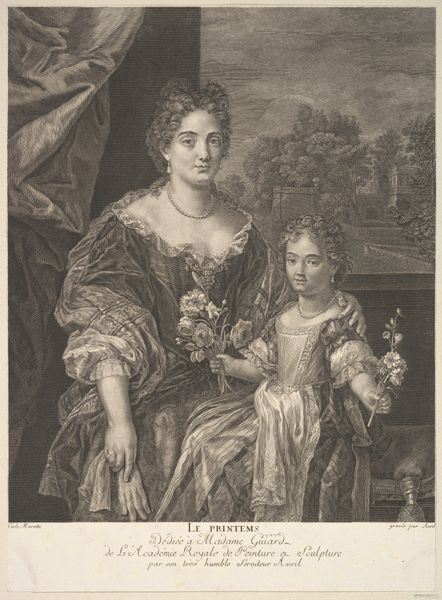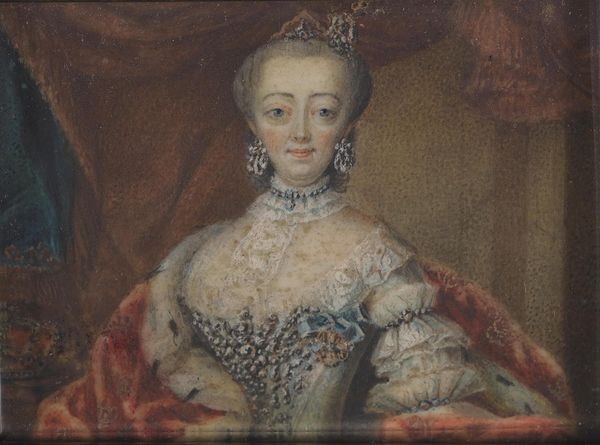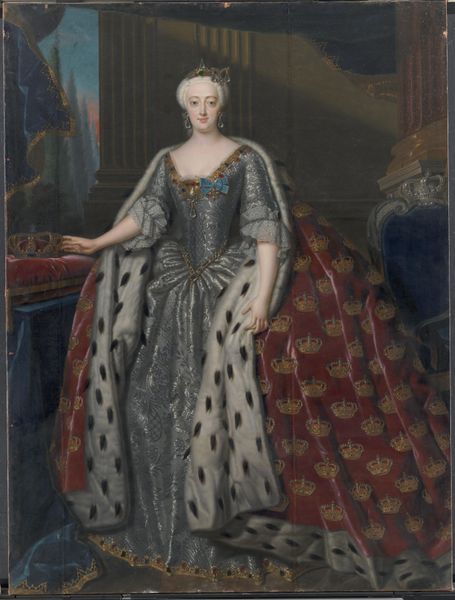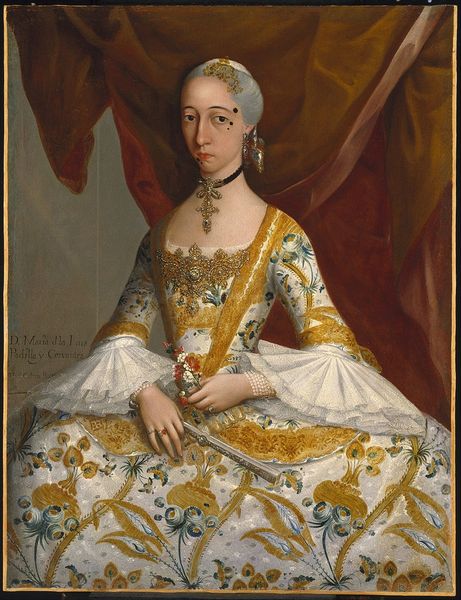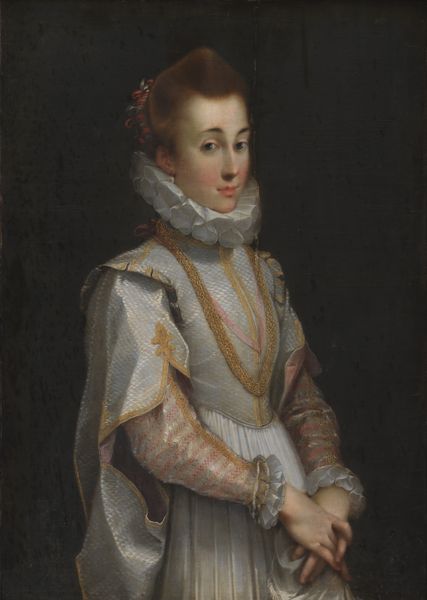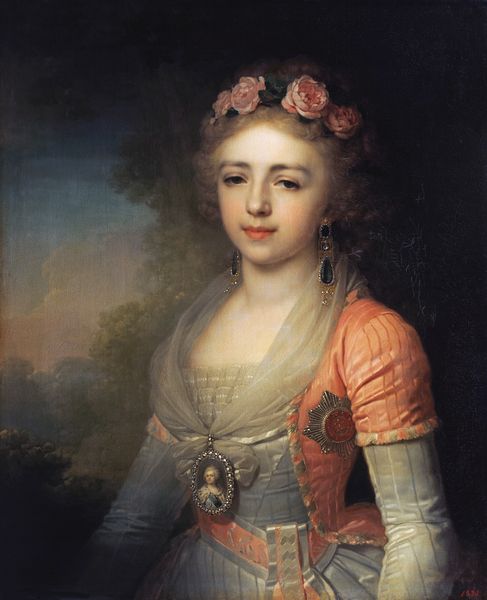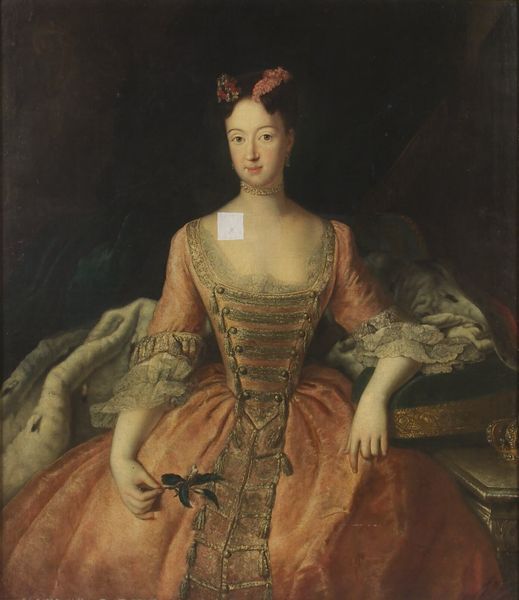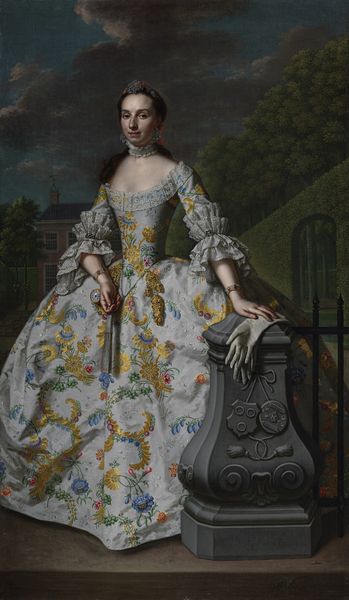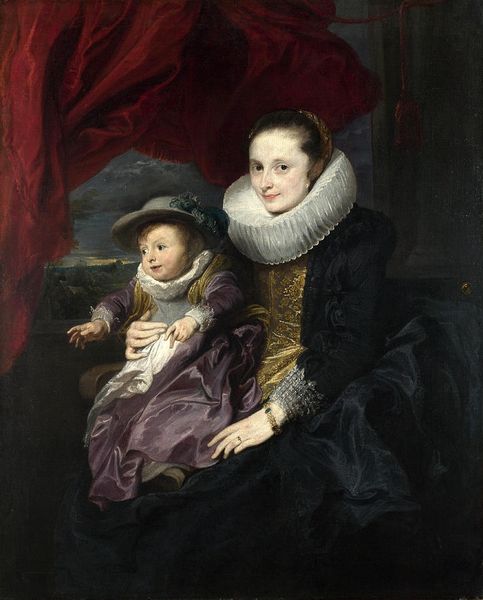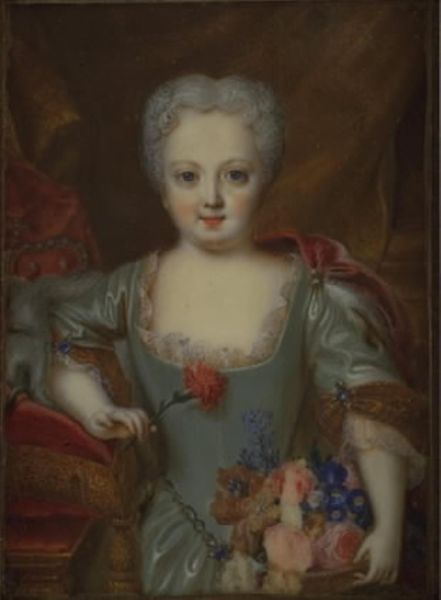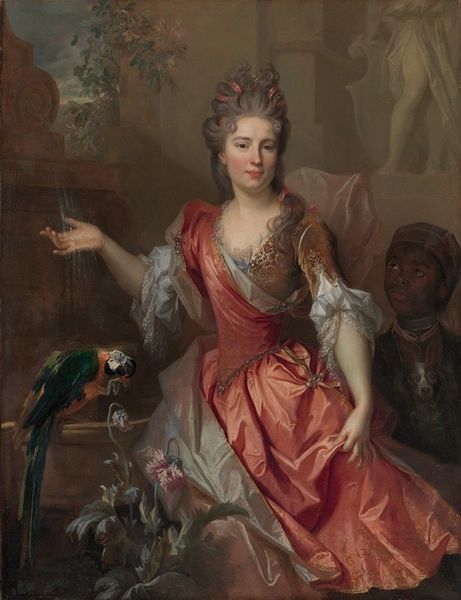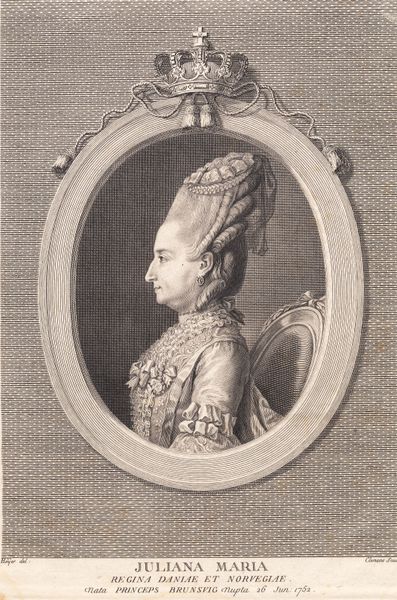
Copyright: Public domain
Editor: Here we have José Campeche's "Doña María Catalina de Urrutia" from 1788, an oil painting that captures a woman in elaborate historical fashion. The formality is striking; there’s a certain power emanating from her gaze. What do you see in this piece? Curator: Beyond the surface of Rococo aesthetics and academic polish, this portrait offers a glimpse into the colonial power dynamics of 18th-century Puerto Rico, Campeche’s homeland. It's more than just a depiction of wealth; it's a carefully constructed image of social identity and the negotiation of power within a complex colonial hierarchy. The very act of commissioning a portrait by a local artist like Campeche can be viewed as a statement. Editor: So, you’re saying the painting is making a statement beyond just showing a wealthy woman? Curator: Precisely. Consider her attire – the European fashion, the powdered wig, and jewels – each element meticulously chosen to project status. But who is she trying to convince? Is it her peers, the colonizers, or herself? And what does it mean to have her son included, a visible symbol of lineage and future power, yet subtly placed to her side? It speaks to the strategies employed by elites in maintaining their positions in a society structured by inequality and colonial rule. Editor: That is thought-provoking. I initially saw a portrait of nobility but missed the layered context of colonialism and identity. Curator: Right, this reading encourages us to see art as a form of cultural production deeply intertwined with historical forces, specifically focusing on marginalized narratives and the legacy of colonial encounters. What does this reading suggest to you? Editor: That art isn’t just about aesthetics; it's a document, a conversation starter about history, power, and identity. Thanks!
Comments
No comments
Be the first to comment and join the conversation on the ultimate creative platform.
